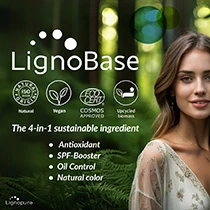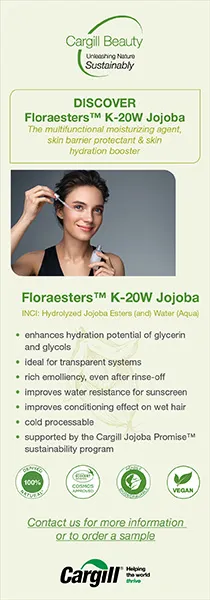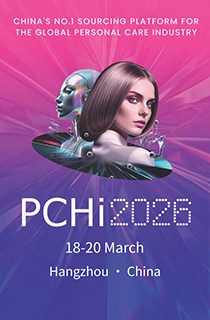AmphiStar’s biosurfactant production shows environmental and health benefits

A life cycle analysis (LCA) of AmphiCare and AmphiClean has demonstrated that AmphiStar’s biosurfactant production has less environmental impact and increased health advantages than other production methods.
Surfactants help reduce the surface tension between two substances, like water and oil, allowing for better mixing and cleaning. In the personal care industry, surfactants are found in shampoos, body washes, and facial cleansers. To make the ingredients more ecological, companies have been switching to biosurfactants — however, they also pose environmental complications.
“The shift toward bio-based surfactants, intended to replace petroleum-derived alternatives, presents a complex environmental trade-off. Many bio-based products rely on virgin crops such as palm oil and sugar, which are cultivated specifically as feedstocks,” Sofie Loden, product and project manager at AmphiStar tells Personal Care Insights.
“This agricultural dependence introduces significant environmental pressures, including substantial water consumption, the application of fertilizers and pesticides that can pollute ecosystems, and the potential for land-use conflicts.”
AmphiCare and AmphiClean are produced by upcycling bio-based waste and agricultural byproducts through fermentation. According to the LCA, second-generation feedstocks can produce less CO2 emissions than biosurfactants from first-generation feedstocks like sugar or vegetable oil.
Keeping biosurfactants environmental
The LCA was conducted from start to finish, evaluating the impact of the biosurfactants from extraction from raw materials to production and then factory manufacture.
Loden says: “The need to dedicate land to virgin crops either diverts resources from food production, raising concerns about food security or can lead to the conversion of natural habitats. The expansion of palm oil plantations, in particular, has become a major driver of deforestation in regions like Indonesia, resulting in the destruction of irreplaceable ecosystems and the endangerment of species.”
“Repurposing diverse waste and side streams for surfactant production provides a key environmental benefit by avoiding the cultivation of virgin crops. This approach utilizes residues from various industrial and agricultural processes that would otherwise be discarded.”
 AmphiCare and AmphiClean are produced by upcycling bio-based waste and agricultural byproducts through fermentation.“While the initial resource investment for these materials has already occurred, their subsequent use minimizes additional resource input, effectively extending their lifecycle and promoting a more circular economy.”
AmphiCare and AmphiClean are produced by upcycling bio-based waste and agricultural byproducts through fermentation.“While the initial resource investment for these materials has already occurred, their subsequent use minimizes additional resource input, effectively extending their lifecycle and promoting a more circular economy.”
The study concluded that AmphiStar biosurfactants are associated with decreased CO2 equivalents per kg of produced biosurfactants. The LCA finds that one kg of AmphiStar biosurfactants emits 0.74 kilograms of CO2 equivalents, compared to 3.05 kg for non-upcycled sophorolipids — a type of surfactant.
The assessment also determined that producing one kg of AmphiStar’s biosurfactants reduced water deprivation potential by 18 times and decreased land use by 7 times compared to a non-upcycled sophorolipid equivalent.
Moreover, the impact of AmphiStar biosurfactants had a 15 times lower biodiversity impact. The biosurfactants are also associated with a 3.5 times decrease in the impact category of ‘damage to resource availability’ compared to a non-upcycled sophorolipid equivalent.
Impact on human health
The study reveals that the impact of AmphiStar biosurfactants on human health is 5.5 times lower than that of a non-upcycled sophorolipid equivalent when considering factors such as disease, injury, and premature death.
Loden adds: “Within the Human Health endpoint category of the Recipe2016 LCA methodology, the impact of various environmental stressors on human well-being is assessed. The output unit is expressed as Disability-Adjusted Life Year (DALY), a WHO standard of which one DALY represents the loss of the equivalent of one year of full health.”
The LCA indicated that the production of 1 kg AmphiCare resulted in 1.86E-06 (0.00000186) DALY, whereas an equivalent non-upcycled sophorolipid resulted in 1.04E-05 (0.0000104) DALY.
“It means that AmphiCare’s value on this metric is 5.58 times lower than the non-upcycled sophorolipid. The reduced impact on human health can mainly be attributed to a significant reduction in water use and particulate matter. Switching to waste-based biosurfactants reduces pollution from farming, meaning healthier lungs and more clean water.”
Loden adds: “AmphiStar’s extensive library of over 80 biosurfactant molecules, each tailored for specific applications, fuels our innovation beyond AmphiCare and AmphiClean. We’re developing new products for diverse applications, moving through various testing and validation stages, demonstrating our commitment to expanding biosurfactant solutions beyond personal care and household applications.”
AmphiCare and AmphiClean were launched in October 2024 and are said to be “the first” commercially available entirely upcycled microbial biosurfactants.
Bio-based beauty
There is a rise in bio-based innovation in the personal care industry as companies attempt to meet increasing consumer demands for sustainability.
Recently, Future Origins entered a multi-year purchase agreement with Kao Corporation for its palm oil alternative, NALO — a low-carbon, deforestation-free material.
Moreover, Sun Chemical will debut several vegan, carmine-free pigments at In-cosmetics Global 2025 in Amsterdam, the Netherlands, April 8–10. The Chione Electric Scarlet SR90D, a red shimmering pigment, and the Chione Electric Sienna SC90D, a copper shimmering pigment, are non-staining, non-bleeding, and offer UV stability.












